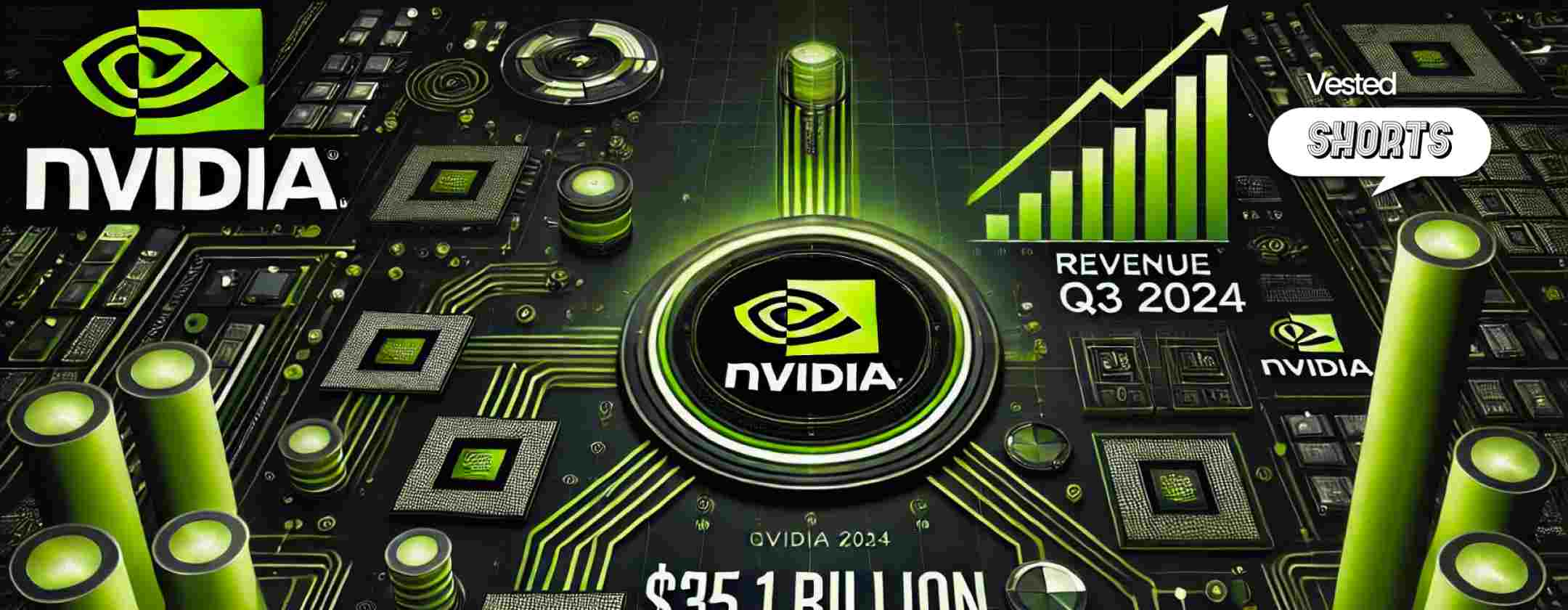In today’s edition,
- Nvidia’s AI momentum
- Amazon bets on big on AI
- Disney’s content growth
- Blockchain’s role in finance
Market Snapshot
Wall Street ended its fifth straight winning week, led by cyclical stocks, while mega-cap tech underperformed.
The Dow Jones Industrial Average rose 1.99% to a record 44,296.51. This was driven by strong performances in industrials, autos, steel, and retail. Companies like Caterpillar (CAT) and Deere (DE) attracted much interest. Moreover, retailers proved resilient, even with Target’s (TGT) disappointing earnings.
The S&P 500 rose by 1.62% to 5,969.34, and the Nasdaq Composite increased by 1.53% to 19,003.65. However, major tech companies like Nvidia, Alphabet, and Amazon fell behind. Investors shifted towards sectors more sensitive to economic changes. This move shows confidence in U.S. economic growth. The market is optimistic about a better business climate under the next administration.
Stock market closing data for the week of Nov 18th to Nov 22nd, 2024
News Summaries
Nvidia’s revenue for the last quarter was $35.1 billion, a 94% rise from the previous year. This growth was driven by strong demand for AI chips like Hopper and Blackwell. Revenue from data centers jumped 112% to $30.8 billion. Major companies such as Microsoft and Google boosted their AI spending, contributing to this surge. Despite concerns about overheating and delays, Blackwell chip sales surpassed expectations. Nvidia now predicts $37.5 billion for the next quarter. There are supply chain issues, especially with TSMC, that could slow down Blackwell’s production. Yet, demand is expected to exceed supply until 2026. The company’s gross margins were 75%, and adjusted net income reached $20 billion. Nvidia’s stock has risen over 200% this year, highlighting its key role in AI. Now, its performance is viewed as a vital sign for the tech industry’s health.
Amazon has raised its stake in Anthropic to $8 billion by adding $4 billion, its biggest investment yet. This move strengthens their collaboration to advance AI. Anthropic’s value has surged past $18 billion, thanks to its chatbot, Claude. In tests, Claude sometimes outperforms OpenAI’s GPT-4. The new funding will integrate Claude with Amazon’s cloud and chip products, enhancing Alexa’s AI. However, Anthropic can still partner with Google and Nvidia. This trend shows a rise in AI investment among major tech companies. Last quarter, Amazon and Microsoft together spent $60 billion on AI infrastructure. They’re also recruiting talent from AI start-ups to stay ahead. Despite facing regulatory challenges, Amazon continues its push. Meanwhile, the UK has approved a deal between Google and Anthropic. As AI demand grows, big tech is focusing on partnerships and building infrastructure, highlighting the high costs of developing generative AI.
Disney is focusing on select Asian markets by investing in high-quality content. This includes the hit Korean drama *Moving*, now the most expensive Korean series ever, and a winner of over 10 awards. The company is also expanding collaborations. It plans projects with webtoon creator Kangfull and is turning the mobile game *Twisted Wonderland* into an animated series. Moreover, Disney is securing exclusive anime titles, like *Go! Go! Loser Ranger!*, to boost its subscriber base. Unlike Netflix, which emphasises local originals, Disney+ aims for fewer, globally appealing projects. These projects tie into its films, theme parks, and merchandise. Meanwhile, Disney is scaling back in Southeast Asia and merging its India operations with JioStar. It remains optimistic about long-term profits in Asia’s streaming market.
From the World of Crypto
Bitcoin showed the world a public, permissionless distributed ledger. It hasn’t fully changed the financial system, but its tech is shaping the future.
Goldman Sachs is taking this innovation in a different direction with its plan to spin off a digital-assets platform. This system will let financial institutions create, trade, and settle instruments more efficiently using a private, permissioned distributed ledger.
It’s a step away from Bitcoin’s open model, but it’s designed to bring big players on board with centralized validation and better collaboration.
Currently, financial transactions depend on separate ledgers that require constant updates. This process is costly and prone to errors. A distributed ledger can solve this. It ensures everyone’s data stays consistent, while each institution keeps its own records.
This could mean faster settlements, fewer errors, and more reliability, especially during financial crises. While the tech needs more computing power, the benefits, like instant settlements and better regulatory oversight, outweigh the costs.
Goldman’s approach is cautious—focused on keeping the system private and within the control of large institutions. Meanwhile, technologists are pushing for public, permissionless ledgers that anyone can use without approval from traditional gatekeepers.
This sets up an ongoing battle: will established institutions adapt just enough to maintain control, or will start-ups introduce a better alternative that forces a more dramatic shift?
Bitcoin itself didn’t completely revolutionize finance, but it planted the seed for change. With cryptocurrencies on the rise again and new ideas like AI-driven crypto and tokenization emerging, distributed ledgers are here to stay. Whether they’re controlled by big banks or driven by decentralized innovation, they’ll play a big role in shaping the future of finance.












